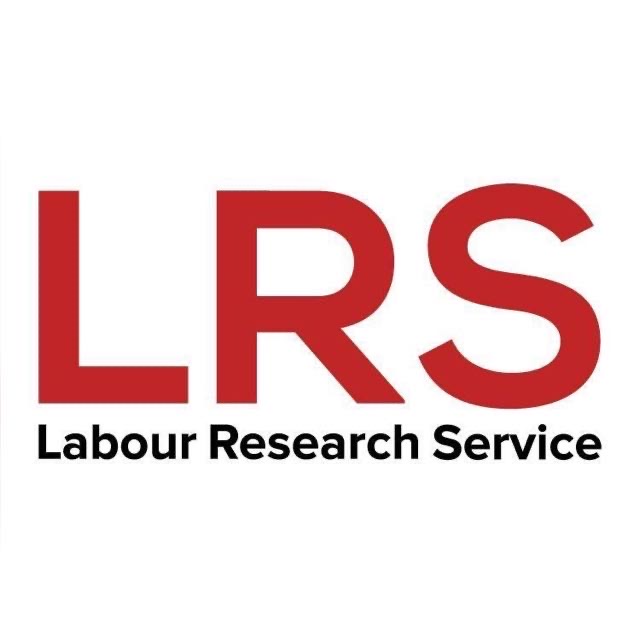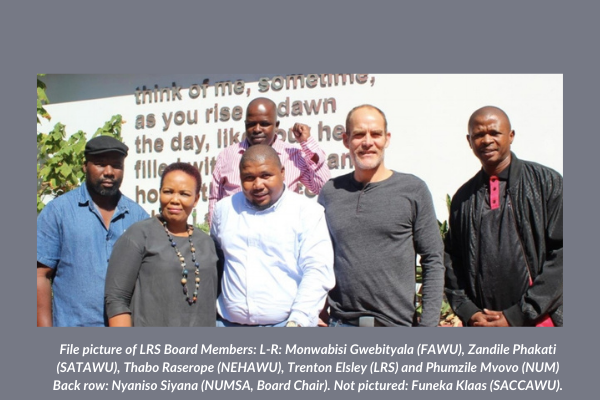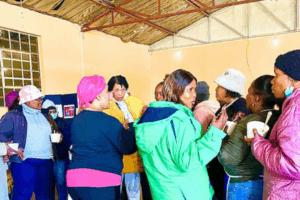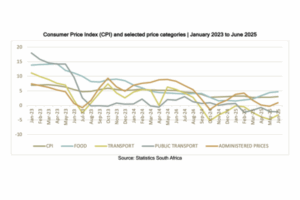With the country in lockdown since late March, Trenton and Labour Research staff have all been working from their homes in either Cape Town or Johannesburg. This year, for the first time, the LRS held its 2020 Board Meeting online. IFWEA interviewed Trenton to know how it was done.
When was the board meeting held?
April 2020.
What platform did you use?
The BlueJeans online platform.
How many people attended?
There’s a total of seven LRS board members, including myself. Five were at the meeting.
What was the aim of the board meeting?
We generally meet quarterly. This was the first meeting of the year. It was important because we had to sign off on audited financial statements, confirm the budget, and make staff remuneration decisions.
How did you decide how to manage the meeting – was there a chairperson, or a moderator?
We had a person who chaired.
How long was the meeting?
It took place over three days. On the 23, 28 and 30 of April. Each session was around three hours long. Normally the board meeting would be a one-day session. This was three days for various reasons. It’s hard to maintain attention and keep your focus in a full-day online meeting. This is especially so if there are challenges at home – for example, not being set up to work from home. Data is also an issue – we had to buy data for some board members. And the technology was initially an issue – it took a while for everybody to feel comfortable. We would generally start our meetings after the scheduled time, because of sorting out these issues. And then data would run out, and we would have to reconvene. Ultimately, it was a very dense agenda, and it felt right to break it up a little bit. Otherwise we would not have done it justice.
Were you able to work through everything you had on the agenda?
Yes, we were able to work through everything.
What challenges did you face?
As mentioned, data. And learning how to use the platform and the technology. But once that was sorted out, there was good participation.
What worked well?
It worked well to stagger the meeting over the three days. I’m not sure if it would work for everybody, but it did for us. If you have the time, it’s worth trying, especially if you have a lot to get through. Don’t squish everything into one small space. We rated the meeting afterwards and were very happy with the level of participation. Having the meeting online certainly didn’t inhibit this. I want to mention something that demonstrates the committed level of participation. One of our board members works in the retail sector – she is a cashier at a supermarket. So she was physically at work, while the rest of us were working from home. She made the time and arranged to be able to attend the board meetings while she was at work. She got permission and made it happen, on the work premises. She could have used her job as an excuse to get out of it, but she didn’t – there she was.
Is this a viable way for organisations to hold Board Meetings in the future?
I wouldn’t do it if we had a choice, but I think it points the way to doing a lot more online then we used to. It certainly cuts travel and other costs. So I think we will be doing this again – and others may also have to. Interestingly, I am involved with another group with a high-level constituency who are well resourced. And there was a lot of difficulty in setting up an online meeting with this group. In comparison, our Board Members include shop stewards, and people with day jobs, some of whom do not own laptops or tablets. And yes, there were obstacles, but I feel we pulled it together better than the other group. We made it work. Three big things stuck out for me: How seriously people took their roles; the fact that they overcame technical and data issues; and the quality of the conversation that ensued. We got all the big things done that we needed to.
LRS is an affiliate of IFWEA.







